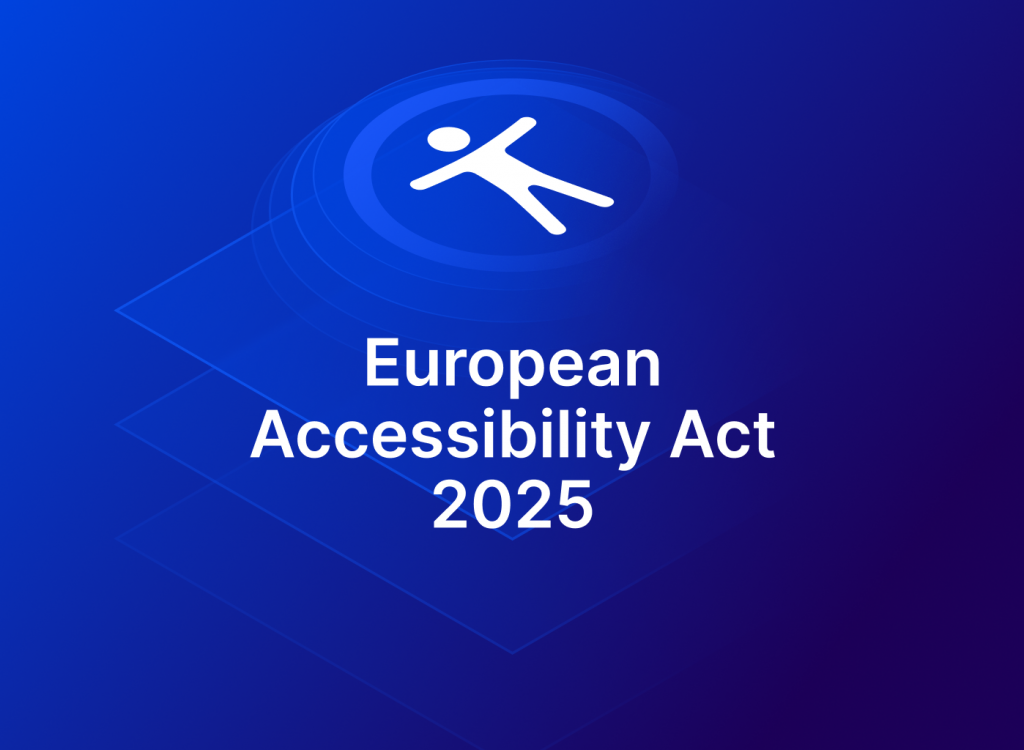European Accessibility Act 2025: What you need to know

The European Accessibility Act (EAA), set to take effect in June 2025, aims to make digital content more accessible for everyone, including individuals with disabilities. This directive directly impacts businesses with a digital presence, encouraging them to prioritise inclusivity and ensure all users can interact with their websites, apps, and digital services.
What is the European Accessibility Act?
The EAA is part of the EU’s initiative to create an inclusive digital environment by eliminating barriers for people with disabilities. The goal of the new directive is to make essential services like e-commerce, banking, and transport websites fully accessible. It aligns with the EU’s broader goals of ensuring equality and promoting inclusion across member states by mandating accessibility standards.
Who does the EAA affect?
The EAA affects medium and large businesses that operate in the following sectors:
- E-commerce: Online stores and marketplaces.
- Financial services: Banks, insurance companies, and other digital financial platforms.
- Transport: Airlines, railways, public transportation, and ticket booking services.
- Telecommunications: Providers of mobile and internet services.
These organisations must ensure their digital services are accessible according to WCAG 2.1 AA standards. Smaller businesses (fewer than 10 employees and a turnover under €2 million) are exempt from these requirements, but medium and large companies must comply regardless of their industry.
WCAG 2.1 AA standards
To comply with the EAA, businesses must align their digital properties with the Web Content Accessibility Guidelines (WCAG) 2.1 AA standards. These guidelines outline specific measures to make web content accessible, including:
- Text alternatives for images to assist users with visual impairments.
- Keyboard navigation to ensure full access without a mouse.
- Screen reader compatibility, allows text to be read aloud for users with visual disabilities.
- Enhanced contrast ratios for better readability.
By adhering to these standards, businesses can create websites and digital services that accommodate users with different types of impairments, ranging from visual and auditory to cognitive and physical disabilities.
What you need to do
To comply with the EAA by 2025, you should start preparing now.
Key steps include:
- Conduct an accessibility audit: Start by assessing the current level of accessibility on your website and other digital platforms. If you’re unsure where to begin, get in touch with us, and we’ll handle the audit for you.
- Work with web developers: Implement changes that align your site with WCAG 2.1 standards. This might include updating content, improving navigation, or adding accessibility tools.
- Continuous testing and updates: Accessibility isn’t a one-time task. Regularly test your digital services to ensure ongoing compliance and maintain the user experience for all visitors.
Consequences of non-compliance
Failing to comply with the EAA can lead to significant penalties, including fines and potential legal action. Businesses may also face reputational damage, as accessibility is becoming a growing concern for consumers. Preparing early helps avoid these consequences while ensuring your business remains compliant by the 2025 deadline. Want to make sure you’re following the new directives?
Benefits of accessibility
The benefits of complying with the EAA go beyond legal requirements.
Better accessibility leads to:
- Improved user experience: Accessible sites are easier for everyone to navigate, increasing customer satisfaction and engagement.
- Wider audience reach: By making your website accessible, you open it up to millions of users with disabilities who otherwise couldn’t interact with your services.
- Brand reputation: Prioritising accessibility can enhance your brand’s reputation, showing that you care about inclusivity and providing equal opportunities for all users.
Conclusion
With the EAA deadline fast approaching, businesses should prioritise making their digital services accessible. By starting now, you’ll not only avoid penalties but also improve your user experience and reputation. Accessibility is about more than compliance, it’s about creating a web for everyone, and by meeting these standards, your business will be ahead of the curve.
Need guidance?
Need help navigating the new accessibility requirements? We’ve got you covered. Our team is here to help you and ensure your website meets the latest standards, making it accessible, compliant, and ready for 2025. Contact us today!
You may also be interested in these articles
Brexit for WooCommerce sellers
The impact of Brexit is huge. There are very many implications for those in e-commerce businesses…
Read more
Brexit for WooCommerce sellers
Cynefin: a valuable framework to classify, communicate and respond to tasks in digital projects
Cynefin. At Angry Creative we think it’s a vital part of digital projects. It helps us to underst…
Read more
Cynefin: a valuable framework to classify, communicate and respond to tasks in digital projects
Web fonts for WordPress
Fonts control how your text is displayed – how the letters actually look. web-safe fonts. W…
Read more
Web fonts for WordPress
Subscribe to our newsletter for tips, inspiration and insight about WordPress and WooCommerce and the digital world beyond.
Time to take the next step towards a more effective website?
Contact us, and we can talk more about how we can take your business to the next level together.